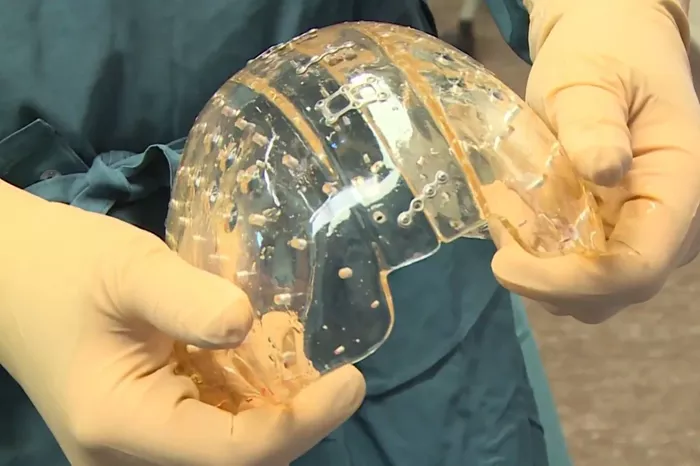Breast augmentation, commonly known as breast implant surgery, is one of the most popular cosmetic procedures worldwide. While many patients report high levels of satisfaction and confidence following the surgery, it’s essential to understand the potential long-term effects. This article delves into 6 long-term effects of breast augmentation implants, providing a comprehensive overview for anyone considering this procedure.
Understanding Breast Augmentation Implants
Before discussing the long-term effects, it’s important to understand what breast augmentation entails. This procedure involves the insertion of silicone or saline implants under the breast tissue or chest muscles to enhance breast size and shape. The surgery is generally safe, but like all surgical procedures, it carries risks and long-term considerations.
1. Capsular Contracture
What is Capsular Contracture?
Capsular contracture is one of the most common complications associated with breast implants. It occurs when the scar tissue that naturally forms around the implant tightens and squeezes the implant. This can cause the breast to feel firm, distorted, and sometimes painful.
Severity Levels
Capsular contracture is categorized into four grades, known as the Baker Grading System:
Grade I: The breast is soft and appears natural.
Grade II: The breast is slightly firm but looks normal.
Grade III: The breast is firm and appears abnormal.
Grade IV: The breast is hard, painful, and looks abnormal.
Long-term Impact
In severe cases, capsular contracture may require surgical intervention to correct. This could involve removing or replacing the implant, which may lead to additional scarring or changes in breast appearance.
2. Implant Rupture and Leakage
Understanding Implant Rupture
Over time, breast implants may rupture or leak. This can happen due to aging of the implant, trauma, or pressure on the breast. The risk of rupture increases as the implants age, which is why they are not considered lifetime devices.
Saline vs. Silicone Rupture
Saline Implants: When a saline implant ruptures, the saline solution is absorbed by the body, usually without harm. However, the implant will deflate, leading to an obvious change in breast shape.
Silicone Implants: A rupture in a silicone implant is often referred to as a “silent rupture” because the silicone gel may remain within the scar tissue, making it less noticeable. However, it can sometimes lead to pain, changes in breast shape, or thickening of the scar tissue.
Long-term Impact
Regular monitoring through MRI or ultrasound is recommended for those with silicone implants to detect silent ruptures. If a rupture is detected, surgery may be required to remove or replace the implant.
See Also: 6 Types of Full C Breast Implants
3. Breast Implant-Associated Anaplastic Large Cell Lymphoma (BIA-ALCL)
What is BIA-ALCL?
Breast Implant-Associated Anaplastic Large Cell Lymphoma (BIA-ALCL) is a rare form of non-Hodgkin’s lymphoma that can develop in the scar tissue and fluid surrounding the implant. It is not breast cancer but a type of lymphoma, which is cancer of the immune system.
Risk Factors
While the exact cause is unknown, textured implants have been more commonly associated with BIA-ALCL. The FDA and other health organizations have issued warnings and guidelines for monitoring and managing this risk.
Long-term Impact
BIA-ALCL is treatable, especially when detected early. Treatment usually involves the removal of the implant and surrounding scar tissue. In some cases, chemotherapy or radiation therapy may be required. Regular check-ups and awareness of symptoms, such as persistent swelling or pain, are crucial for early detection.
4. Changes in Breast Sensation
Immediate vs. Long-term Changes
Changes in breast and nipple sensation are common immediately after surgery due to nerve damage. While sensation often returns to normal within a few months, some patients may experience long-term changes.
Hyperesthesia and Anesthesia
Hyperesthesia: Increased sensitivity in the breast or nipple area, which can be uncomfortable or painful.
Anesthesia: Reduced or complete loss of sensation, which may be permanent in some cases.
Long-term Impact
The likelihood of long-term sensory changes depends on factors such as the surgical technique, implant size, and placement. While these changes are not harmful, they can impact sexual function and breastfeeding.
5. Breastfeeding Challenges
Breast Augmentation and Breastfeeding
Many women with breast implants can successfully breastfeed, but the procedure may pose challenges depending on the surgical approach. Implants placed through an incision around the areola or inserted under the muscle can potentially disrupt milk ducts or nerves.
Impact on Milk Supply
In some cases, breast implants may reduce milk supply. This is more likely if the implants compress the breast tissue, reducing the amount of milk-producing glandular tissue.
Long-term Impact
Women considering breast augmentation who wish to breastfeed in the future should discuss this with their surgeon. Understanding the potential impact on breastfeeding can help in choosing the best surgical approach.
6. Psychological and Emotional Effects
Positive Psychological Impact
For many women, breast augmentation leads to increased self-esteem, body image satisfaction, and overall confidence. These psychological benefits are often cited as the primary reason for undergoing the procedure.
Potential Negative Effects
However, some women may experience regret, dissatisfaction, or body dysmorphia over time, especially if complications arise or if their body image changes with age. The need for additional surgeries to address complications or replace aging implants can also lead to emotional stress and financial burden.
Long-term Impact
It’s important for individuals to have realistic expectations and to consider the psychological and emotional aspects of breast augmentation. Ongoing support and counseling may be beneficial for those experiencing negative psychological effects.
Conclusion
Breast augmentation implants can have both positive and negative long-term effects. While many women enjoy lasting satisfaction and confidence, it’s crucial to be aware of potential complications like capsular contracture, implant rupture, BIA-ALCL, sensory changes, breastfeeding challenges, and psychological impacts. Regular follow-ups with a healthcare provider and being informed about the risks can help in managing these long-term effects.
Understanding the potential outcomes and maintaining realistic expectations are key to a successful and satisfying experience with breast augmentation. Always consult with a board-certified plastic surgeon to discuss your goals, concerns, and the best options for your individual needs.
Related topics:

